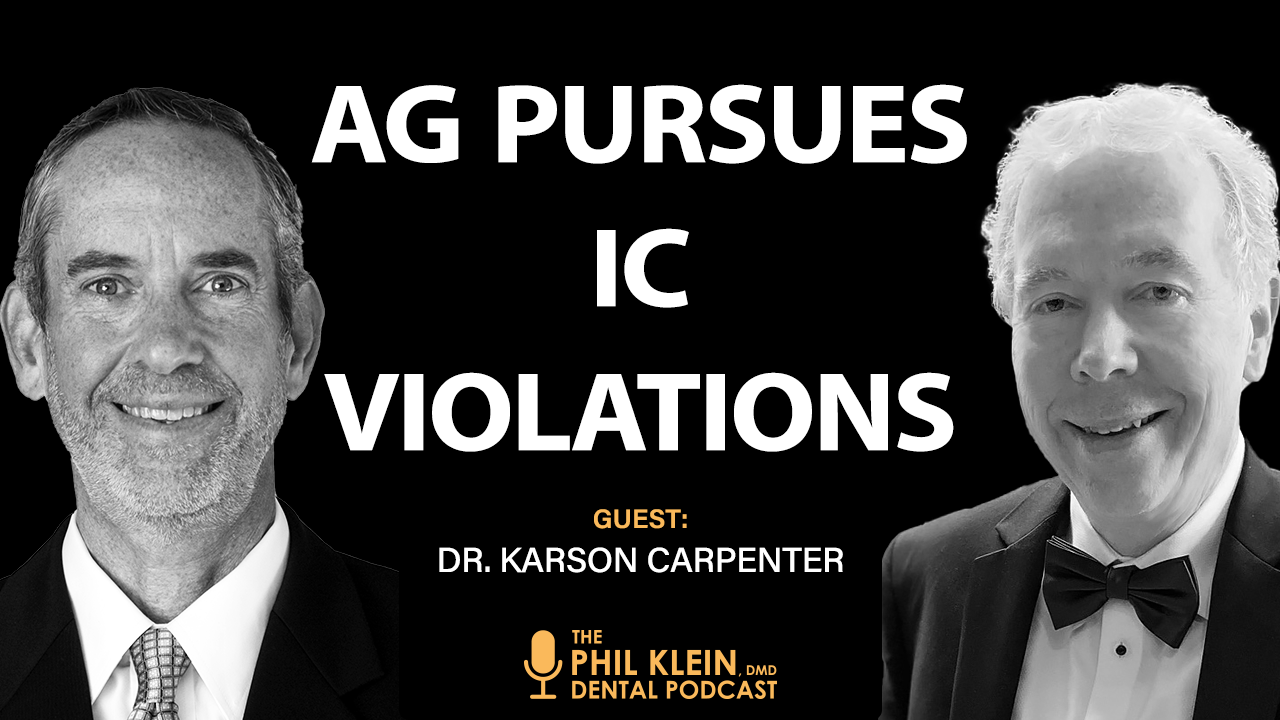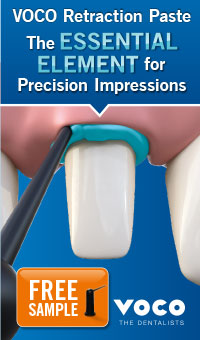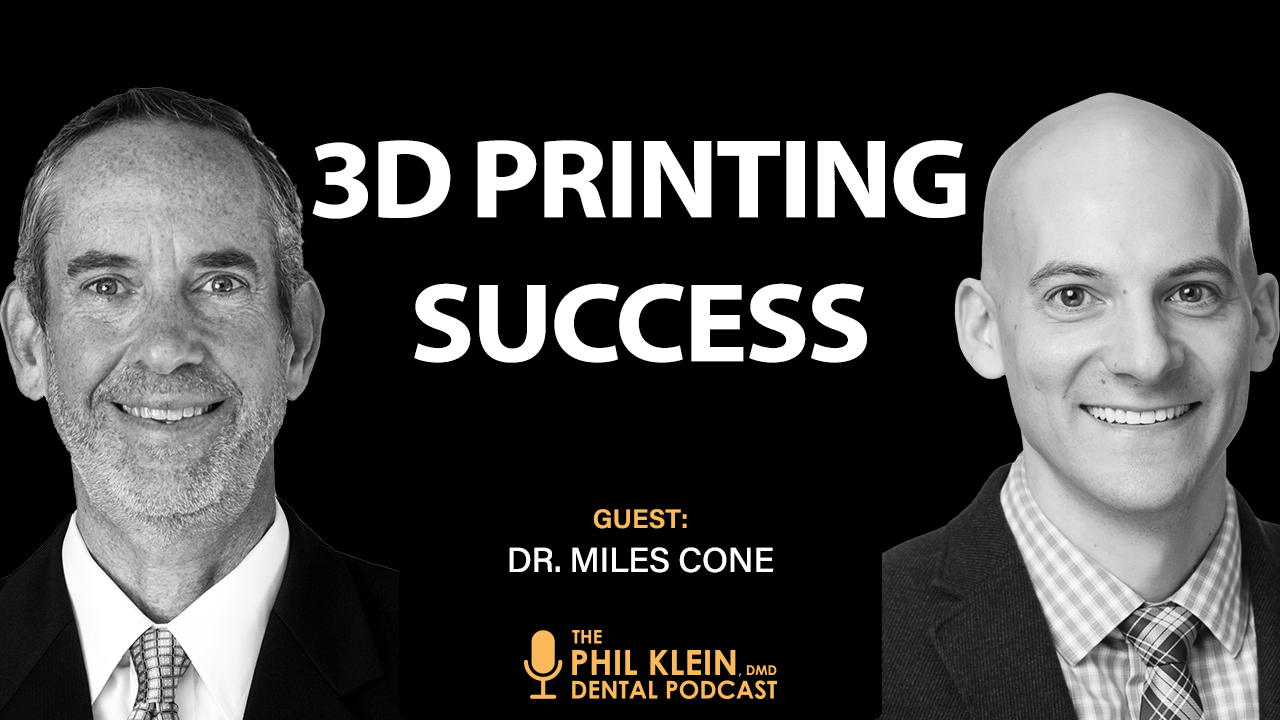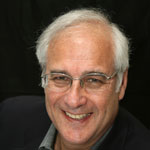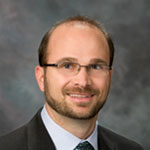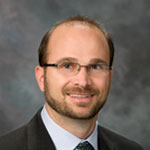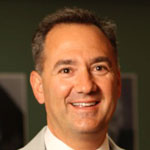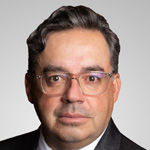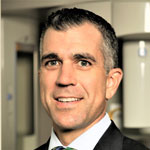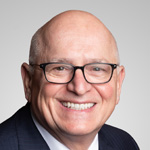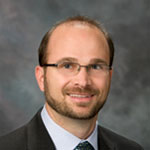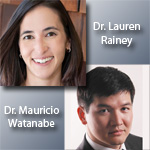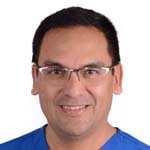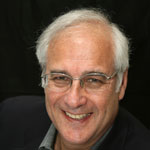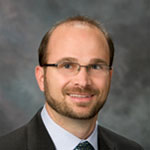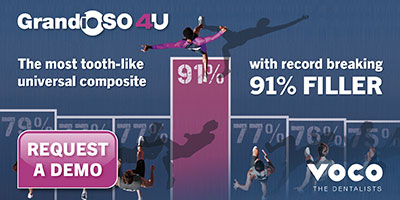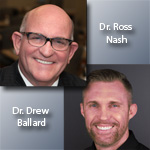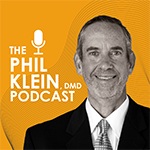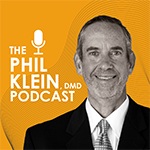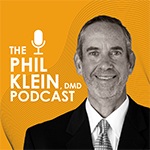As the demand for individualized and holistic oral care continues to grow, dental professionals must be prepared to address diverse patient preferences and questions surrounding fluoride. This engaging, evidence-based CE webinar explores the science behind remineralization and compares the efficacy of fluoride with emerging alternatives like calcium phosphate technologies, hydroxyapatite, and xylitol. Attendees will gain practical strategies to tailor care based on age, health status, caries risk, and patient concerns—while reinforcing the role of prevention in enamel health.
The only constant in dental materials is change! Technological and chemical innovations are offering impressive advancements. Today’s conventional composites offer clinicians two options: First, the esthetic traditional layering technique and second, the bulk-fill technique. The former being the choice for most restorations in the anterior smile zone and the latter, often selected for the posterior regions of the mouth. While bulk-fill materials typically are deep-curing, time saving and offer clinical efficiency, they too often lack the esthetic properties required for beautiful esthetically demanding anterior restorations. For this reason, most clinicians have a second composite system in office that is designed to be placed in two-millimeter increments and will sometimes require a variety of shades to meet the esthetic demands. A new next-generation of resin composites is emerging. One that offers you the clinical efficiency of a bulk-fill, with an easy cluster shade-matching protocol and phenomenal esthetics! With outstanding, non-sticky handling and excellent polishability, perhaps now you only need one class of material for all of your restorative needs. At the conclusion of the CE webinar the attendees will have a clearer understanding of the clinical impact that this new chemistry and technology can have on their everyday restorative dentistry. More importantly, the attendees can evaluate if these evolutions may have a place in their own clinical practice.
It seems so easy doesn’t it? Yet most people struggle with one or more aspects of direct composites. In this CE webinar, join us as we break down the common areas that we struggle with and explain simple solutions to those problems.
Part two of this two-part CE webinar series addresses the critical phases of implementation and evaluation in the dental hygiene process of care. Participants will explore advanced practices for clinical applications, examine the integration of cutting-edge technologies, and learn how to enhance patient-centered outcomes. Workflow optimization strategies specific to these stages will also be highlighted, focusing on increasing operational effectiveness and clinical efficiency. This course encourages the adoption of continuous innovation and professional growth, inspiring attendees to apply advanced strategies that elevate their practice and open new professional opportunities. An in-depth review of relevant CDT codes is included to ensure accurate billing and financial success. While tailored for dental hygienists, this course provides dentists with actionable insights to better guide and support the hygienists on their teams, fostering a more cohesive and productive practice environment.
This CE webinar is about real dentistry for real patients by a real dentist! Dr. Glazer will present a potpourri of materials and techniques for patients that present with caries and broken teeth that will make your day at the office easier and more productive. The webinar will focus on adhesive restorations and crown and bridge solutions. He will discuss what’s tried and true, and what’s new. Learning about the latest products will benefit you and your patients with materials that are faster, easier, and better for you and your patients. Dr. Glazer, international lecturer and author, writes a bi-monthly column, “I Have It…You Need It!” in Dental Economics magazine where he reviews new products and materials.
Part one of this two-part CE webinar series focuses on the foundational phases of the dental hygiene process of care—assessment, diagnosis, and planning. Participants will explore the essential components of each step, revisit traditional practices, and uncover opportunities for enhancement. A dedicated section on workflows provides practical strategies to streamline these phases, leveraging innovative technologies and tools to improve efficiency, accuracy, and patient outcomes. A review of relevant CDT codes ensures precise documentation and supports improved profitability. While designed primarily for dental hygienists, this series also offers valuable insights for dentists seeking to support and maximize the performance of their hygiene teams.
There are some dentists who boldly (or quietly) love and respect a different material, but for all the rest, who say, “Yeah, but…” there must be another way. Imagine a clinical day without recurrent decay…there is a way! At the end of this CE webinar, participants should be able to:
• Contrast ormocers from composites and glass ionomers
• Defend the evidence for sealants
• Witness caries lesion arrest
Difficulty swallowing (dysphagia) affects your quality of life and your overall health. The ability to safely swallow is vital for adequate nutrition and hydration, and it prevents foods and liquids from entering your lungs, where they can cause pneumonia. Depending on which part of the swallowing process is affected, dysphagia can be described as:
• Oral dysphagia — when the problem is in the mouth, usually due to the movement of the tongue
• Pharyngeal or oropharyngeal dysphagia — when the problem is regarding food passing through the throat
• Esophageal dysphagia — when food is unable to move down through the esophagus
Swallowing disorders can lead to tooth decay and other oral health issues if they cause food or liquid to remain in the mouth. This can increase the risk of cavities and other oral diseases.

Patients with Sickle Cell Disease (SCD) or the Sickle Cell Trait (SCT) face unique challenges when they need dental treatment. Unfortunately, many dental professionals know very little about sickle cell disease and are not aware of the clinical manifestations and precautions that should be taken when treating these patients. Sickle cell disease severely affects oral health including increased risk of infections, severe dental decay caused by vaso-occlusal neglect, delayed healing and bone density issues. Sickle cell disease is the most prevalent genetic disease affecting approximately 7.7 million people worldwide of all nationalities. Participants of this webinar will gain insights into the unique oral health challenges faced by individuals with SCD and the importance of preventive care in mitigating these risks. The CE webinar will cover essential preventive dental hygiene practices, tailored treatment planning, and communication strategies to effectively support this patient population. By focusing on initiative-taking oral health care, the webinar aims to enhance the quality of life and overall health outcomes for individuals with Sickle Cell Disease, addressing both their physical and emotional well-being.
Risk assessments are the cornerstone of dental caries management, but there’s more to the process than filling out a form. If you feel stuck to a questionnaire, this presentation will help get you “off the page” and into a deeper conversation that changes behavior.
We are 40 years since Professor Branemark introduced his research on osseointegration to the dental community. Dental Implants provide our patients with successful long-term restorative solutions for function, comfort, and aesthetics. Today, Dental Hygienists are seeing more patients with dental implants. Implant manufacturers have introduced new implant designs, surfaces, and surface chemistry that affect biocompatibility and maintenance protocols. There are concerns about what materials we use to reduce peri-implant inflammation, may negatively affect the implant surface's biocompatibility and the implant’s long-term success. This CE webinar will review dental implant component materials and design and the biological compatibility of commonly used instruments, technology, and therapeutic materials.
The success rate of dental restorations varies significantly depending on the restorative material used, and the protocols the clinician employs given the clinical situation. This CE webinar is designed to provide dentists with crucial insights into the most commonly used direct and indirect restorative materials in daily practice and how clinician’s strategies and protocols in using these materials impact the success rate of dental procedures, improving both efficiency and outcomes.
As the role of dental hygienists continues to expand, staying ahead of technological advancements is key to providing exceptional patient care. This CE webinar is tailored for dental hygienists eager to harness the power of technology to transform the patient experience. From digital scanning and AI-enhanced diagnostics to innovative patient communication platforms, attendees will learn how to integrate modern tools into their workflow, improving patient education and enhancing case acceptance for proactive interventions.
The global clear aligner market is anticipated to reach a staggering $6.84 billion annually by 2028. Translation, millions of new cases will be initiated annually by both GPs and Orthodontists each year. Whether you are just tip toeing into these waters, or fully immersed, it’s critical to understand that successful case outcomes depend heavily on the mechanical advantage provided by leveraging attachments during treatment.
With so many choices in materials and available cements, chaos may ensue when deciding to lute or bond each restoration. There has to be a better way to understand and ensure long-term success for our restorations. This CE webinar is designed for the attendee to gain confidence in their cement selection and handling of each restoration.
Health inequities persist for people with intellectual and developmental disabilities. Individuals with developmental disabilities experience poorer oral health and challenges accessing dental care. Historically, the dental curriculum did not require training dental professionals to care for and manage the treatment of persons with intellectual and developmental disabilities. Providers often report feeling unprepared to care for this population. This CE webinar will evaluate the current barriers to care, identify complex factors contributing to oral health, and equip the dental provider with strategies to improve patient care for people with intellectual and developmental disabilities.
In this CE webinar, Dr. Tomaro will share with participants different scenarios where the clinician has to make a decision as to the technique and choice of materials. The correct material choice and mimic nature. The restoration and tooth becomes as one.
Gone are the days of messing and inaccurate plaster and stone in dental offices. 3D printing not only is far more efficient and cleaner but it is more accurate and far more versatile. Many types of appliances and restorations can be printed in-office simply and quickly. Of course study models and smile design models are also printed easily. This CE webinar will demonstrate protocols and give instruction for the integration of the team. Give your patients the convenience they demand while increasing your bottom line.
Armed with new clinical guidelines based on recent systematic reviews, clinicians must choose between the comfort of what they’ve always done and what can stop and reverse dental caries. It’s time to move from bonding to chemical fusion.
More and more, dental hygienists are expected to select the most accurate CDT procedure codes for the medically necessary treatment they provide to patients. Since the ADA’s Code Maintenance Committee meets yearly, those procedures and their descriptors can either be amended, deleted, or stay the same. The CE webinar will discuss the changes (or not) and additions/deletions which came on January 1, 2025. Some of the new and updated dental procedure codes will include revisions and additions to implant maintenance procedures, long requested by hygienists. In addition, more and more caries management products are being developed and how to know which code is the most appropriate. And what procedure code for desiccation therapy? A total of 10 new codes, 8 revised codes and 2 deleted codes will be presented.
The science and technology built into dental composite resins is impressive, but rarely do practitioners (or patients) realize how versatile our materials really can be. Direct placement is the most common approach for composite, but by relying on the material science within, predictable indirect composite restorations can also be life-like, strong and long lasting. Join the co-presenters in this CE webinar as they review cases from North and South America as they compare and contrast uses of composite resin in their daily practice.
This CE webinar will discuss which criteria needs to be met such as optimal primary stability, correct 3D positioning, etc., during immediate implant placement in the anterior region. Additionally, the Dr. Rocha will discuss the creation of an immediate provisional restoration on the implant while respecting biological principles leading to preservation of the papillae, gingival volume, and recession prevention. A step-by-step case will be presented showcasing the use of a stratified composite resin for both the provisional restoration as well as the infrastructure.
This CE webinar explores the importance of integrating mental health considerations into dental care strategies, focusing on patient-centered approaches to improve outcomes. Key aspects covered include understanding the oral health implications of psychiatric medications, the role of oral health professionals in recognizing signs of mental illness, and the need for tailored dental care plans to accommodate the specific needs of this population. Additionally, preventive strategies, such as establishing oral health routines, regular dental visits, and collaboration between mental health providers and dental professionals, are discussed to enhance care and reduce the long-term risks of dental diseases for those living with mental illness. By fostering a holistic approach to care that addresses both mental and oral health, dental professionals can play a pivotal role in improving the overall well-being of individuals suffering from mental illness. The webinar concludes with recommendations for further research and education to bridge gaps in dental care for this vulnerable population.
This is a CE webinar about real dentistry for real people by a real dentist! Dr. Glazer has been practicing for 50 years and knows what materials, products and techniques will make your day at the office easier, more productive and fun! This unique webinar will discuss what’s tried and true, and what’s new. Topics may include adhesives, composites, prevention, provisional materials, tissue retraction, lasers, rotary cutting instruments, curing lights, and patient management tools.
The expanding landscape of the oral microbiome is redefining our understanding of oral health and disease. With the rapid increase in new therapeutics and changing evidence, we can still practice preventive rather than reparative dentistry.
This CE webinar goes beyond simply looking at KPIs: It helps cultivate a dynamic environment that reflects your professional ethos and enhances patient care. This webinar explores key areas such as personal leadership, team dynamics, and patient experience and how to develop a confident, proactive approach to your care while fostering collaboration and efficiency within your dental team. The webinar emphasizes implementing strategies for continuous skill enhancement and innovation and leveraging your skills to unlock new professional potential.
More dentures are being made through digital processes as dentists try to bring this service in office to lower their lab bill and labs try to speed up their production flows. Also resins and printers have been continually improving so that patients get a better prosthetic. Dr. Russell Schafer has been fabricating digital dentures in his office since 2018 using a variety of 3d printers and resins. Despite this, he still works closely with a CDT for many cases. In this CE webinar, Dr. Schafer will go through how he decides when to make 3d printed denture in house vs when to send it to a lab to design vs when to send it to a conventional denture lab. Also we will discuss efficient methods for taking denture records to minimize the number of appointments needed to deliver well fitting dentures. Finally, we will discuss different types of dentures and methods of manufacturing 3d printed dentures.
This CE webinar will delve into the benefits of choosing alignment therapy prior to restorative treatment. It will explain in detail the different types and the purpose of attachments in clear aligner therapy, as well as smile architect and successful clincheck treatment planning. The instructor will then give clinical tips for restorative treatment after alignment therapy has been completed.
With the yearly changes made to the CDT dental codes it can be challenging for a dental professional on how or advise patients what procedures their insurance carriers will be covered or to help their patient file their own dental claims. This CE webinar will discuss a variety of procedures like desensitizing, dental creams/varnishes and how they can be profitable for a dental practice.









